Explore Pontremoli, an evocative town in Tuscany’s unknown Lunigiana region
About Pontremoli
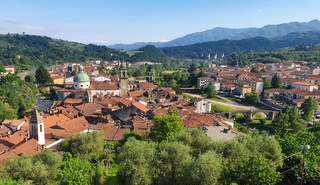
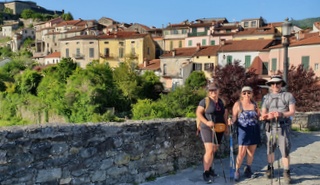
Pontremoli is a picturesque town which sits at the confluence of two rivers, the Magra and the Verde, and is the northernmost town in Tuscany. It is the perfect escape if you have spent time in the busy Tuscan cities of Pisa, Florence or Siena, as it has a feeling of real life about it and an understated atmosphere. It was an important stopping point on the famous pilgrim route between Canterbury and Rome, known as the Via Francigena, and it’s also an important stop for Hedonistic Hikers as we stay here in the middle of our walking week on the Parma, Tuscany and the Ligurian Sea tour. It’s name may have originated from a trembling wooden bridge – “pons tremulus” – which was frequently destroyed whenever the Magra river flooded.
Where is Pontremoli?
Pontremoli is the major town in the area known as the Lunigiana. This is a long finger of land in northern Tuscany which separates Emilia-Romagna from Liguria and does not bear much resemblance to the rolling hills, olive groves and vineyards of central and southern Tuscany. The mountains of the Alpi Apuane are rugged and steep, forming deep valleys covered in dense chestnut forests. The area is sparsely populated and much less visited than the rest of the region. The Lunigiana is known as “the land of 100 castles”, many of which were built by the Malaspina, the ruling family for many centuries. The striking mountain scenery attracts hiking and outdoor enthusiasts.
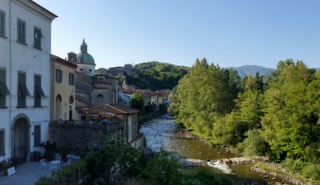
History of Pontremoli
Pontremoli has forever been the gateway from the Po Valley in the north to the rest of central Italy and this strategic position means that its history is as complex as it is long. First occupied by the Luni tribes who were defeated by the Romans, the town has been ruled through the centuries by the Spanish, the French, the Dukes of Milan and the Grand Duchy of Tuscany. In around 990 AD it was first mentioned in the famous pilgrim route of Archbishop Sigeric from Canterbury, as the 31st halt on the Via Francigena, leading to Rome from England. In 1322 fighting in the town between the Guelphs and Ghibellines (supporters of the Pope and the Holy Roman Emperor respectively) led to the construction of a fortress known as the “Cacciaguerra”, which was built to separate the rival factions and keep the peace. Napoleonic armies came through the Lunigiana and in WWII it was occupied by the Germans, but became a pivotal base for partisan activities.
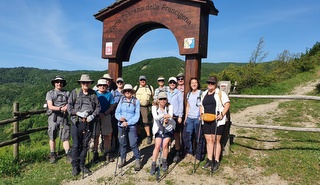
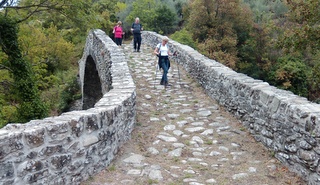
Things to do in Pontremoli
Stele Statues
Perhaps the most unique experience in Pontremoli is a visit to the Castello del Piagnaro, the castle at the top of the town, which houses the mysterious collection of stele statues. The statues are one-dimensional representations of warrior men and women, carved from sandstone, and thought to have been made between the Copper and Iron Ages. Most of the finds were discovered in the Magra river valley, and their meaning is still strongly debated. Some argue that they held symbolic or religious significance, others that they represented powerful living or deceased members of the local community.
Duomo of Santa Maria Assunta
The Torre del Campanone is the only surviving structure of the Cacciaguerra fortress mentioned above and is now the bell tower between the Piazza del Duomo and the Piazza della Repubblica. The cathedral Santa Maria Assunta is a baroque building with dozens of glittering chandeliers inside (unusual for a Tuscan cathedral) and richly decorated with golden cherubs and a Carrara marble facade.
Baroque Palaces
The Palazzo Dosi Magnavacca is a fine example of the sumptuous private homes built for residents of the town in the first half of the eighteenth century. This is opened on demand. The Villa Dosi Delfini is another Baroque masterpiece. An excellent way to enjoy Pontremoli is with the brilliant network of local guides at Sigeric.
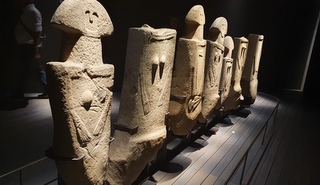
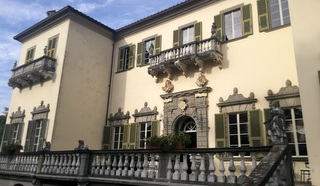
What to eat and drink in Pontremoli
The forests which surround the area lead to many recipes using chestnuts, which can also be ground into flour and used in a variety of cakes, pastas and breads to replace ordinary flour. The mountains in the Lunigiana, and particularly the area between Pontremoli and Zeri, are known for a delicious mushroom, the “fungo di Borgotaro”, which in season can be eaten sautéed, grilled, in pasta dishes or even raw. The region is also well known for it’s Zeri lamb.
As for a pasta course, Pontremoli is famous for its invention of “testaroli”, a sort of large pancake made with a mixture of wheat flour, water and salt. They are cooked directly onto a cast iron testo for just a few minutes and then cut into small diamond shapes. Finally they are boiled for a minute in salted water, and seasoned with extra virgin olive oil, pecorino or parmesan cheese, or a delicate Ligurian basil pesto. If you have a sweet tooth try an “amor”. It’s a wafer sandwich with a rich filling of whipped cream, infused with a hint of lemon, and a delicious aftertaste of cognac.
White native grape varieties to look out for in this region are Vermentino, Albarola and Durella, and for reds Vermentino nero, Massaretta and Pollera.
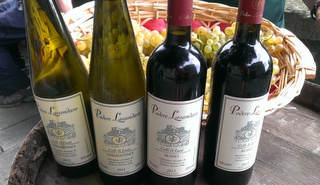
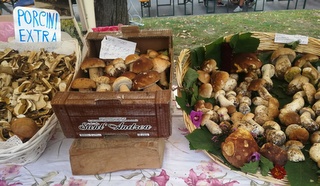
Getting to Pontremoli
If you are coming by car from the direction of Lucca, Pisa or the Ligurian coast, follow the Autostrada A12 to the Pontremoli exit. If you are travelling by train, there is a station at Pontremoli and from Parma, Pisa or Florence there are regular trains, most with one change in Vezzano Ligure. Pisa is the nearest international airport.
